Managing a dairy farm requires a meticulous approach and careful attention to detail. Dairy farm operations must follow a structured month-wise maintenance plan to maximize profitability. By implementing scientific and accurate strategies tailored to each Month, dairy farmers can ensure the health and productivity of their herd, ultimately leading to better profits.
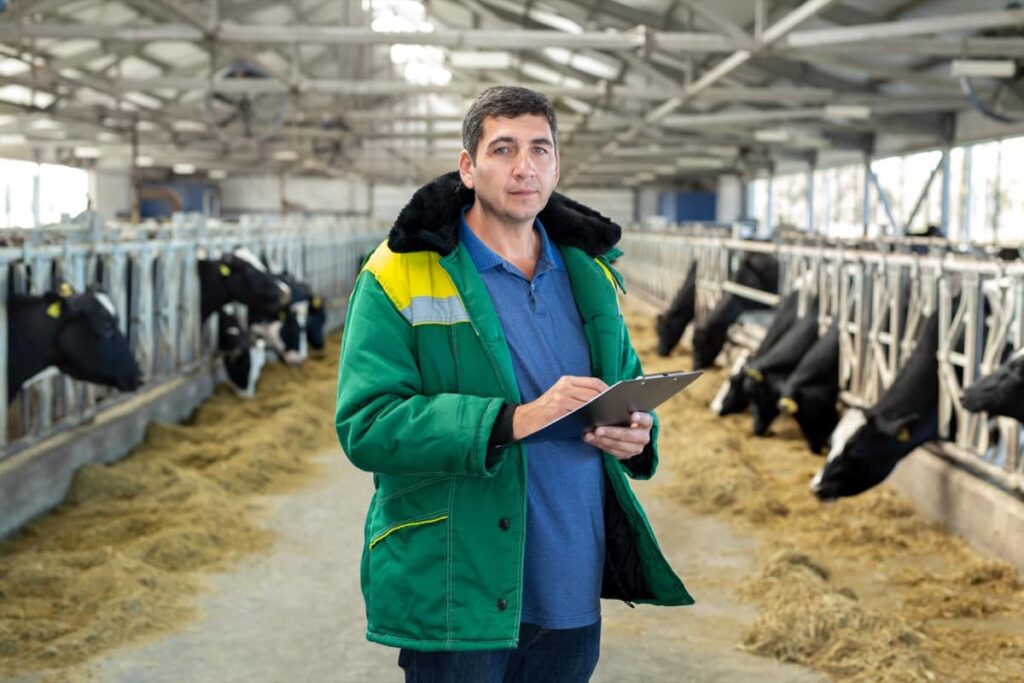
This blog dives into the essential tasks and maintenance practices required throughout the year, highlighting the key operations for each Month. From calf care and nutrition to deworming, vaccination, and overall herd management, this guide provides valuable insights for dairy farmers aiming to optimize their operations and boost their bottom line.
What is Dairy Farm Operations Management?
Dairy Farm Operations Management can be defined as the systematic planning, organizing, and controlling of various activities involved in running a dairy farm. It encompasses the management of resources, such as animals, facilities, and personnel, to ensure efficient and profitable operations.
This includes animal health care, nutrition management, breeding and reproduction, milk production and processing, waste management, and financial planning. By employing effective decision-making, dairy farm operations management aims to optimize the farm’s productivity, animal welfare, and overall profitability.
General Maintenance and Operation Activities in Dairy Farm Management: Birth to Next 12th Months
Birth
- Ensure the calf’s environment is clean and hygienic.
- Perform the ligation of the navel cord to prevent infections.
- Implement protective measures against cold weather, such as providing adequate shelter.
- Trim the hooves of adult cows for optimal hoof health.
- Feed colostrum to the calf, approximately 10% of its body weight, within 30 minutes of birth. Divide the remaining volume into four parts and feed every six hours.
- Check for the passage of meconium, the calf’s first stool.
Week 1-2
- Continue feeding colostrum/transition milk at 1-1½ kg per day, divided into two to three doses, for 3-4 days to protect against calf scours and pneumonia.
- Administer deworming medication on day 7 with piperazine hydrate to protect against ascariasis.
- Take measures to protect calves from cold or heat stress.
- Perform dehorning as soon as the horn button becomes visible.
- Implement identification marks using tattooing or ear-implantable RFID microchips/transponders.
Week 3-4
- Feed whole milk to the calf at 7% of its body weight and clean water at 3% of its body weight in two divided doses.
- Repeat deworming with piperazine hydrate at three weeks of age.
- Introduce small amounts of crushed grains into the calf’s diet.
- Add 5-10 g of the mineral mixture to concentrate once a week.
In case you missed it: 50 Cow Dairy Farming Project Report: Profits, Setup Cost, and Bank Loan in India
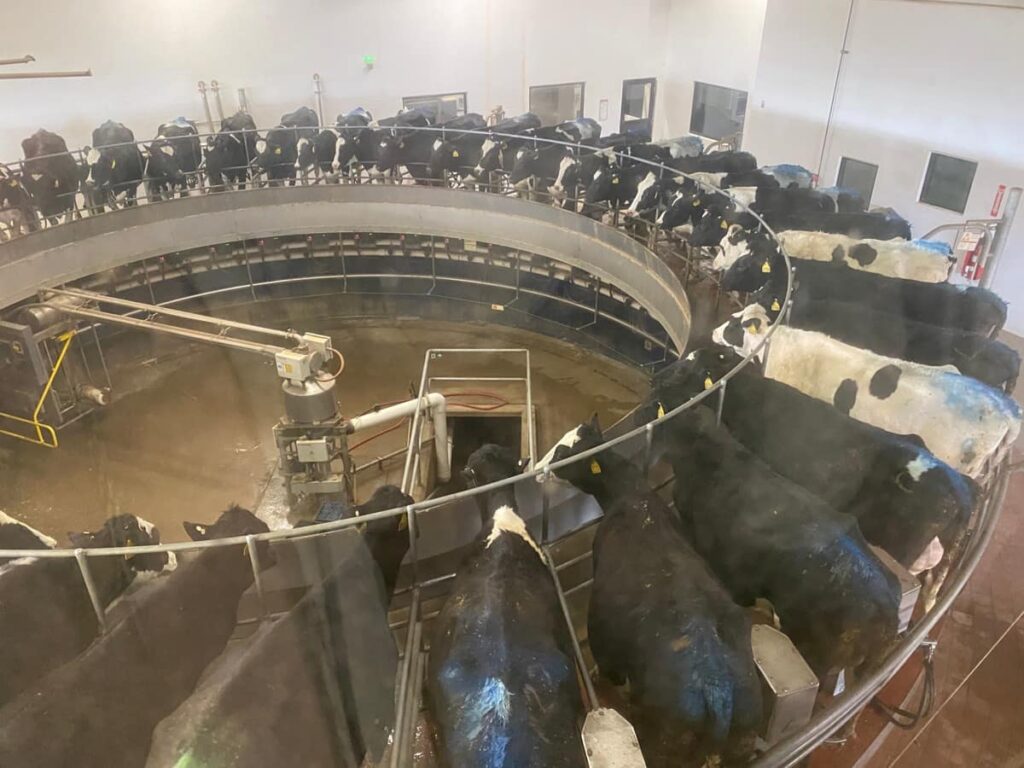
Week 5-2 Months
- Continue feeding whole milk at 7% of body weight, along with clean water at 3% of body weight.
- Remove extra teats before six weeks of age.
- Shower the calf with water twice a day during hot weather.
- Provide drinking water ad libitum.
2-3 Months
- Stop milk feeding at three months of age.
- Introduce green fodder at a rate of 0.1-0.4 kg per day.
- Perform deworming with albendazole at 2 and 3 months of age.
- Administer coccidiostats like amprolium and sulphamethazine in feed for 15-20 days.
- Shower the calf with water twice daily during the summer season.
- Provide drinking water ad libitum.
4th-6th Month
- Vaccinate the calf against FMD, HS, and BQ at four months.
- Deworm the calf with albendazole at five months of age.
- Conduct examinations for coccidiosis/Eimeria oocysts at the 4th, 5th, and 6th months of age.
- Administer amprolium and sulphamethazine orally for 3-5 days in case of infection.
- Screen for brucellosis and vaccinate serologically negative female calves at six months.
7th-12th Month
- Feed the calf with green fodder, dry fodder, concentrate, and mineral mixture at specific daily quantities.
- Deworm the calf with ivermectin oral liquid at seven months of age.
- Regularly examine the calf for coccidiosis and administer appropriate medication if necessary.
- Administer booster vaccinations for FMD, HS, and BQ at nine months.
Month-Wise Operations in Dairy Farm Management for Better Profits
Managing a dairy farm efficiently involves implementing specific month-wise operations. Each Month demands focused tasks, from cleaning and calf care to nutrition, deworming, and vaccinations. These operations, backed by accurate data, ensure the well-being and productivity of the herd, ultimately leading to increased profitability for dairy farmers.
In case you missed it: How to Start Sustainable Dairy Farming: Benefits and How to Reduce Your Carbon Footprint With Dairy Cattle
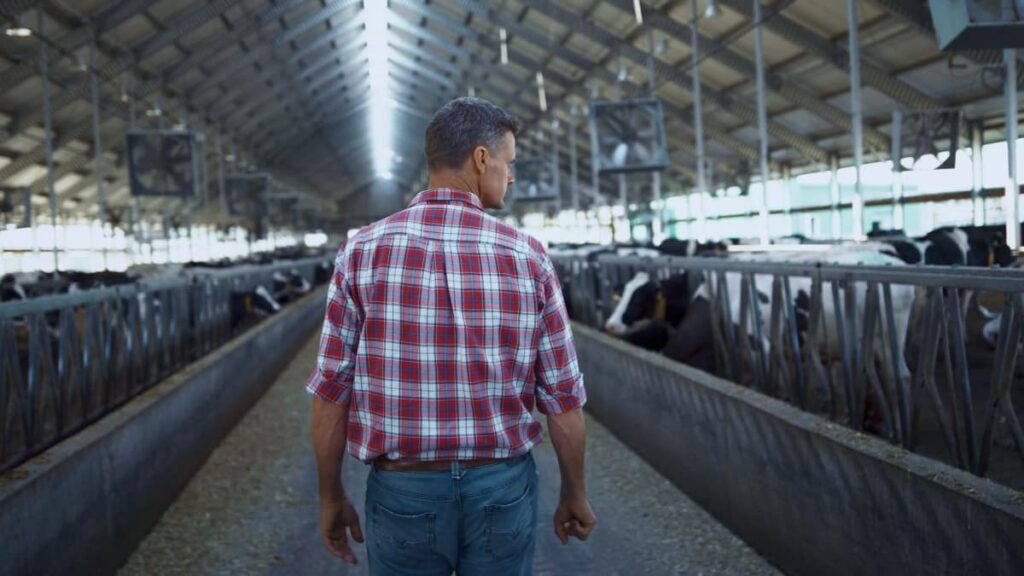
January Month Operations in Dairy Farm
- Focus on cleaning and maintenance of calf pens and facilities.
- Perform ligation of navel cords in newborn calves.
- Implement protective measures against cold weather to ensure calf health.
- Trim hooves of adult cows for optimal hoof health.
February Month Operations in Dairy Farm
- Continue with calf care, ensuring proper feeding of colostrum to newborns.
- Monitor the passage of meconium in calves.
- Implement deworming measures for calves on day 7 to protect against ascariasis.
- Take measures to protect calves from cold or heat stress.
March Month Operations in Dairy Farm
- Maintain colostrum/transition milk feeding to calves in divided doses for protection against calf scours and pneumonia.
- Initiate dehorning of calves once the horn button becomes visible.
- Implement identification marks using tattooing or ear-implantable RFID microchips/transponders.
April Month Operations in Dairy Farm
- Continue feeding whole milk to calves in divided doses.
- Repeat deworming with piperazine hydrate at three weeks of age.
- Begin introducing small amounts of crushed grains to the calf diet.
- Add mineral mixture to concentrate once a week for additional nutritional support.
May Month Operations in Dairy Farm
- Maintain the feeding of whole milk and clean water to calves.
- Remove extra teats before the age of 6 weeks.
- Ensure calves have access to water and are showered twice a day during hot weather.
- Provide drinking water ad libitum for all calves.
June Month Operations in Dairy Farm
- Gradually stop milk feeding and introduce green fodder to calves’ diet.
- Perform deworming with albendazole at 2 and 3 months of age.
- Administer coccidiostats like amprolium and sulfamethazine in feed for 15-20 days.
- Continue showering water twice daily during the summer months.
July Month Operations in Dairy Farm
- Focus on the provision of green fodder and drinking water ad libitum.
- Vaccinate calves against FMD (Foot-and-Mouth Disease), HS (Hemorrhagic Septicemia), and BQ (Black Quarter) at four months of age.
- Perform deworming with albendazole at five months of age.
- Conduct regular examinations for coccidiosis and administer coccidiostats if necessary.
August Month Operations in Dairy Farm
- Monitor the feed intake of calves and provide a balanced diet consisting of green fodder, dry fodder, concentrate, and mineral mixture.
- Continue deworming with ivermectin oral liquid at seven months of age.
- Conduct regular examinations for coccidiosis and administer coccidiostats as needed.
- Administer booster vaccinations for FMD, HS, and BQ at nine months.
September Month Operations in Dairy Farm
- Monitor the feed intake of calves and ensure they receive a balanced diet consisting of green fodder, dry fodder, concentrate, and mineral mixture.
- Conduct regular health check-ups for all animals in the herd.
- Implement measures to prevent and control common diseases and infections.
- Focus on optimizing milk production and quality.
In case you missed it: How to Start Dairy Farming in Cambodia: Key Rules, Business Plan, Breeds, Cost, Profit, License, and Management
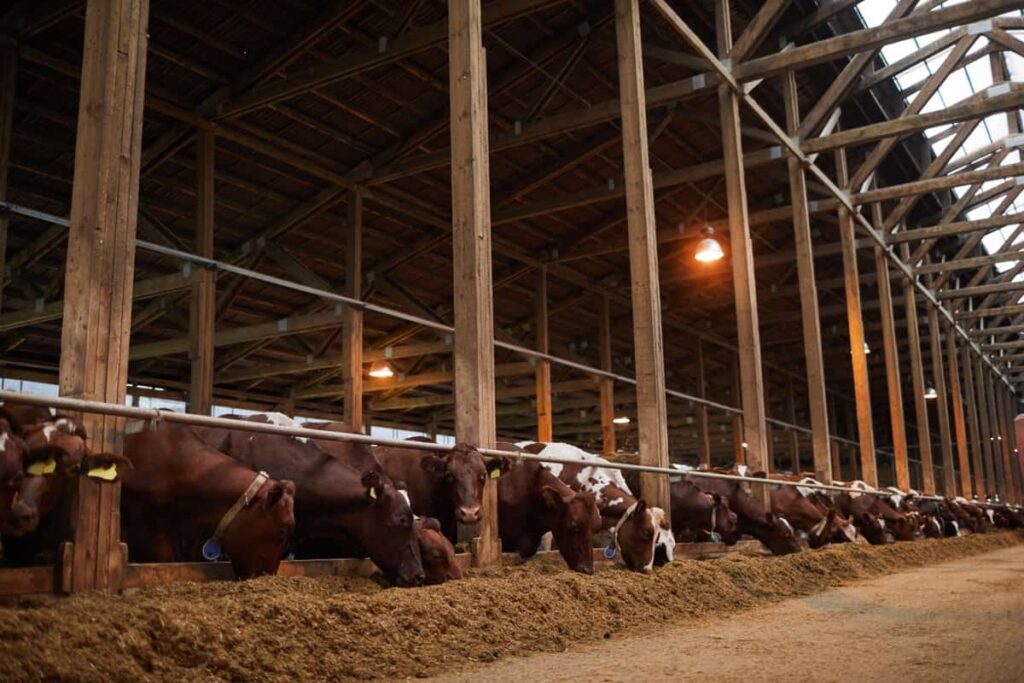
October Month Operations in Dairy Farm
- Continue monitoring the feed intake and overall health of the herd.
- Pay attention to the reproductive health of cows, ensuring proper heat detection and timely artificial insemination or breeding.
- Provide adequate housing and shelter for animals to protect them from adverse weather conditions.
- Implement effective manure management practices.
November Month Operations in Dairy Farm
- Monitor the reproductive performance of cows and take necessary actions to maximize conception rates and minimize calving intervals.
- Pay attention to the nutritional needs of lactating cows, providing a balanced diet to support optimal milk production.
- Conduct regular milk quality checks and implement measures to maintain milk hygiene and prevent Mastitis.
- Plan for the upcoming breeding season and prepare the necessary resources.
December Month Operations in Dairy Farm
- Focus on calf management, ensuring proper nutrition, housing, and care.
- Implement measures to prevent and control common winter diseases such as respiratory infections.
- Monitor and manage the overall health and well-being of the herd.
- Evaluate the financial performance of the dairy farm and make necessary adjustments for better profitability.
Calendar of Activities for Cattle Management for Better Profits Operations in India
January Calendar of Activities for Cattle Management
- Protect livestock from cold weather and frost in northern India.
- Take measures like artificial lighting and heating to combat frost.
- Cover weak and sick animals with sackcloth and provide shelter.
- Avoid keeping animals in damp areas and protect them from smoke.
- Provide lukewarm feed and water to animals.
- Feed animals a mixture of oil cakes and jaggery to maintain body temperature.
- Start collecting and storing fodder.
- Provide salt mixtures for essential salts in animals.
- Deworm the animals and keep sheds clean to protect them from ecto-parasites.
- Vaccinate animals against various diseases.
- Irrigate fodder crops regularly.
February Calendar of Activities for Cattle Management
- Protect animals from wet weather and temperature drops.
- Continue with a controlled breeding program and deworm newborn animals.
- Vaccinate lambs/kids against PPR and prevent Mastitis in dairy cattle.
- Irrigate fodder crops regularly.
- Dry and store Alfalfa and Berseem Clover as dry fodder or silage.
March Calendar of Activities for Cattle Management
- Prevent diseases caused by hot weather and insects.
- Provide treatment for sterility and Johne’s disease.
- Test milk and urine if there is a decrease in production.
- Irrigate fodder crops regularly.
- Sow Maize, Bajra, and Jowar for green fodder.
- Prepare silage from green fodder.
- Feed pregnant animals mineral mixture to boost immunity.
In case you missed it: How to Care for Dairy Goats: Shelter/Housing, Fencing, Feeding, and Disease Control
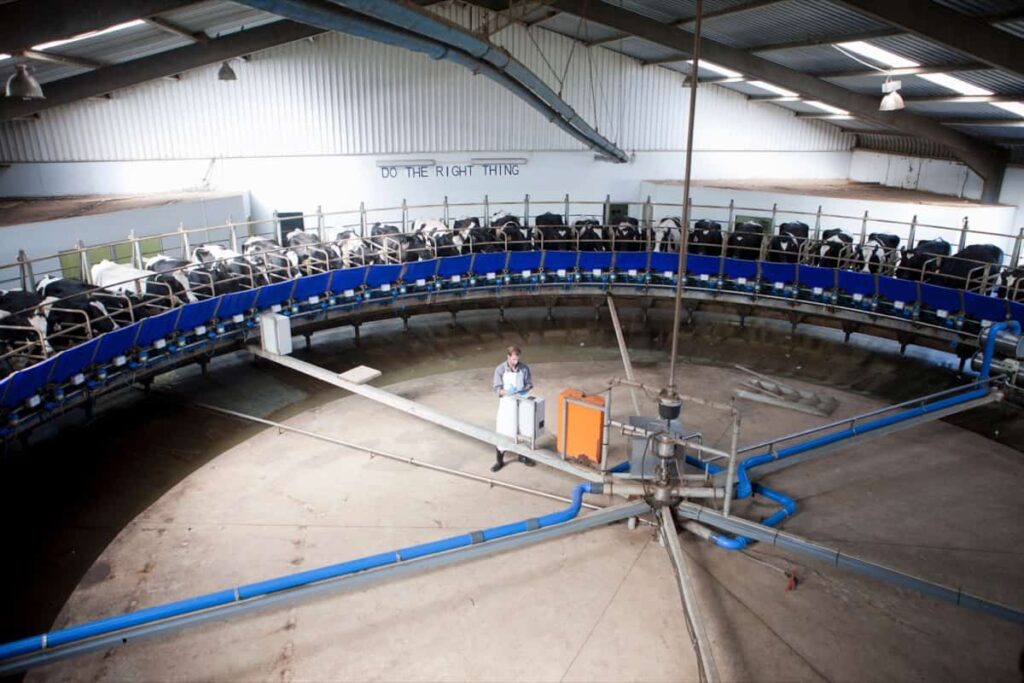
April Calendar of Activities for Cattle Management
- Protect animals from high temperatures and dehydration.
- Provide shaded resting areas for draught animals.
- Ensure clean drinking water for animals.
- Look for signs of Mastitis and vaccinate lambs against Enterotoxemia.
- Provide additional feed for pregnant animals.
- Mix the salt solution in mineral blocks to prevent ‘Pica.’
- Properly dispose of carcasses to prevent Botulism.
- Harvest Maize, Bajra, and Jowar crops.
May Calendar of Activities for Cattle Management
- Protect animals from high temperatures and dust storms.
- Collect and store fodder for periods of shortage.
- Mix the salt mixture in feed and water to prevent essential salt loss.
- Adjust animal feed content based on the season.
- Give balanced feed to dairy animals.
- Deworm animals and harvest fodder crops.
- Shear sheep during this Month.
June Calendar of Activities for Cattle Management
- Protect animals from high temperatures and dust storms.
- Collect and store fodder for periods of shortage.
- Mix the salt mixture in feed and water to prevent essential salt loss.
- Adjust animal feed content based on the season.
- Give balanced feed to dairy animals.
- Deworm animals and harvest fodder crops.
- Shear sheep during this Month.
July Calendar of Activities for Cattle Management
- Protect animals from heat, damp weather, and slush.
- Vaccinate animals against diseases.
- Provide colostrum to newborns and prevent Milk Fever.
- Avoid grazing in irrigated fields with poisonous cyanide.
- Transplant perennial fodder grasses and sow Maize, Jowar, and Bajra.
- Drench sheep with disinfectant after shearing.
August Calendar of Activities for Cattle Management
- Protect animals from excessive heat and sun exposure.
- Vaccinate animals against diseases and keep infected animals separate.
- Clean and disinfect diseased animals.
- Remove carcasses to prevent the spread of Botulism.
- Vaccinate goats and sheep against diseases.
- Deworm animals and protect from ecto-parasites.
- Provide mineral mixture to enhance milk production.
September Calendar of Activities for Cattle Management
- Drain water and keep sheds dry.
- Protect animals from temperature changes and prevent Milk Fever.
- Protect animals from parasites and vaccinate lambs.
- Mate cows within the appropriate time frame.
- Restrict grazing time and mix essential salts in feed.
- Prepare silage and cut perennial grasses.
- Start sowing Berseem and Alfalfa.
October Calendar of Activities for Cattle Management
- Protect animals from winter weather and shearing sheep.
- Clean and disinfect animal sheds and pens to prevent the spread of diseases.
- Provide proper ventilation in the sheds to maintain air quality.
- Feed animals a balanced diet to support their health during the winter months.
- Collect and store sufficient fodder for the winter season.
- Vaccinate animals against common winter diseases.
- Check for signs of respiratory infections and provide appropriate treatment.
- Provide bedding and warm shelter for animals during cold nights.
- Ensure access to clean water and prevent it from freezing.
- Monitor the body condition and weight of animals and adjust their feed accordingly.
- Protect animals from pests and parasites.
- Conduct regular health check-ups and consult a veterinarian if necessary.
In case you missed it: Common Dairy Cattle Diseases, Symptoms, and Treatment: Check How this Guide Helps Dairy Farmers
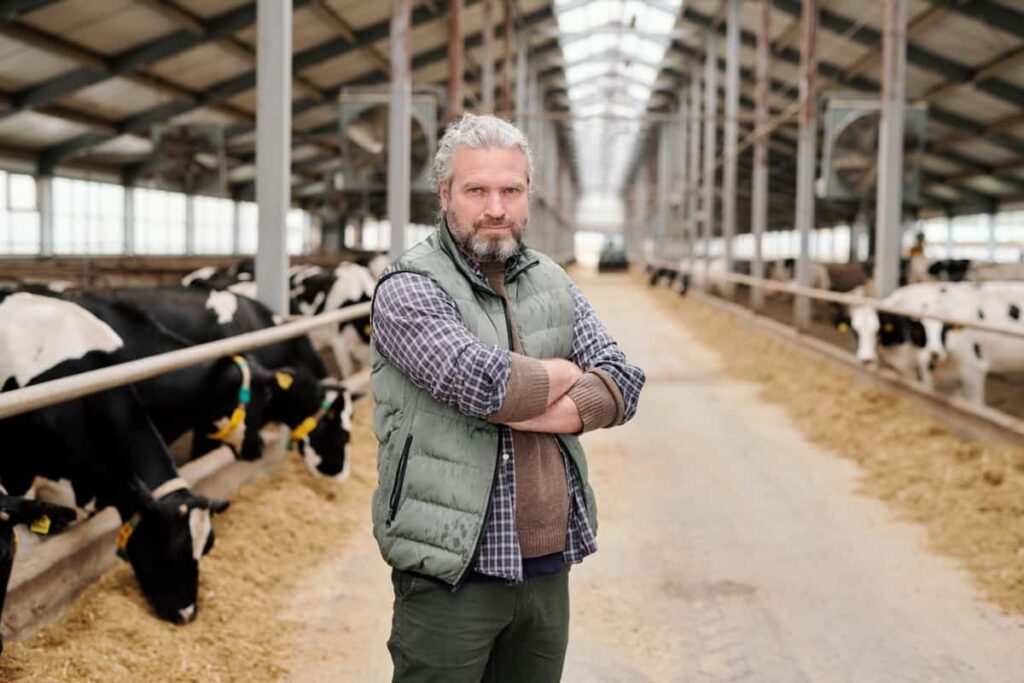
November Calendar of Activities for Cattle Management
- Continue to provide warm shelter and bedding for animals.
- Monitor the body condition and weight of animals and adjust their feed accordingly.
- Collect and store additional fodder if needed.
- Ensure access to clean water and prevent it from freezing.
- Vaccinate animals against winter diseases.
- Monitor and control pests and parasites.
- Conduct regular health check-ups and address any health issues promptly.
- Implement proper waste management practices to maintain cleanliness.
- Prepare for the upcoming breeding season.
December Calendar of Activities for Cattle Management
- Provide warm shelter and bedding for animals.
- Feed animals a balanced diet to maintain their health during the cold weather.
- Continue monitoring the body condition and weight of animals.
- Ensure access to clean water and prevent it from freezing.
- Protect animals from frostbite and hypothermia.
- Vaccinate animals against winter diseases.
- Control pests and parasites.
- Conduct regular health check-ups and address any health issues promptly.
- Prepare for the breeding season and implement the necessary breeding practices.
- Plan and prepare for the upcoming year, including farm management and improvements.
Note: Remember that the specific tasks and considerations may vary depending on the region, climate, and type of livestock. It’s always advisable to consult local agricultural experts or veterinarians for personalized guidance based on your specific circumstances.
Conclusion
Implementing month-wise maintenance practices in dairy farm operations, such as proper hygiene, vaccination, feed management, and health check-ups, ensures optimal health and productivity of livestock. This improves profits by minimizing losses and maximizing milk production and farm efficiency.
- Management Pests and Diseases in Your Cotton Field
- Sheep Farming Business Plan for Beginners
- Aquaponic Farming at Home: A Step-By-Step Guide
- Profitable Village Farming Business Ideas in 2024
- High-Yield Aquaculture: Fast-Growing Fish for Farming
- Effective Fish Pond Construction Techniques for Beginners
- Irrigation and Water Management in Pineapple Farming
- Blossom to Harvest: Mastering Flowering and Pollination in Papaya Farming
- Pig Fattening Essentials: From Selection to Sale for Beginners
- Raising Wagyu Cattle: A Complete Guide for Premium Beef Production
- Soil Types and Their Water Holding Capacity
- Optimizing Irrigation Schedules for Coconut Groves for Enhanced Yield
- Espresso Your Garden: Coffee Grounds for Healthier Acid-Loving Plants
- The Best Soil Mix for Snake Plants: How to Mix Your Own Snake Plant Soil
- Green Thumb Success: Expert Tips for Cultivating Greenhouse Beans All Year Round
- Bloom All Year Round: The Ultimate Guide to Indoor Hyacinth Care
- Eco-Friendly Gardening: How to Make Liquid Fertilizer from Kitchen Waste
- Ultimate Guide to Grow Anise in Pots: Explore Seed Propagation to Harvesting
- Guide to Raising Chester White Pigs: Discover Breed Facts to Growth Management
- Mastering the Elegance: The Ultimate Guide to Weeping Cherry Tree Care, Planting, and Maintenance
- Ultimate Guide to Planting Garlic in Grow Bags: Growing Strategies for Beginners
- How to Fix Spider Plant Leaf-Related Problems: Natural and Organic Remedies
- 10 Reasons Why Your Tulsi Plant is Shedding Leaves: Home Remedies and Solutions
- Optimizing Growth and Yield: The Advantages of Palm Bunch Ash Fertilizer
- Utilizing Neem Oil Extract as a Natural Pesticide for Hydrangea
- From Soil to Harvest: Various Ways in Which Farmers Can Use AI Tools
- Steps to Encourage and Induce Citrus Flowers: A Comprehensive Guide
- How to Fix Snake Plant Leaf-Related Issues: Natural and Organic Remedies
- Transform Your Garden into a Fragrant Oasis with Raat Ki Rani (Night Blooming Jasmine)
- Discover the Ideal Chicken Breeds for Philippine Farms
- How to Create a Poultry Egg Farm Business Plan for Profits
- Grow Lemon Cucumbers Like a Pro: Insider Techniques for Bountiful Yields
- Ultimate Guide to Caring for Your Pink Princess Philodendron: Tips for Thriving Variegation
- Areca Nut Profit Per Acre: Calculating Yield and Cost of Cultivation
- How Kaveri Chicken is Becoming a More Profitable Breed in Indian Backyards
- Transform Your Barn: 9 Steps to Convert a Horse Stall into a Chicken Coop
